Text
Graduate Stories: Life as a...
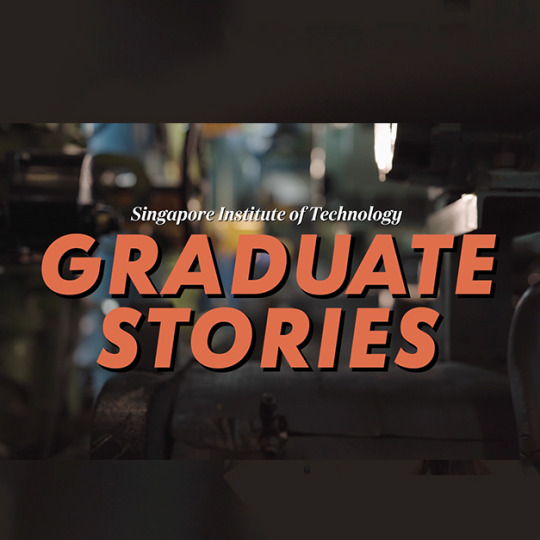
Gen Zs are entering the workforce as we speak but how ready are they for the workforce? A budding opinion is that a traditional education system might no longer be enough to equip students with skills needed for the workforce, as current trends greatly influence workforce needs.
To produce work-ready graduates, institutes of higher learning such as SIT centers its curriculum on technical knowledge and applied learning. Its flagship Integrated Work Study Programme (IWSP) requires all SIT undergraduates to immerse themselves fully in the industry for six to 12 months to gain a deeper perspective of their fields of expertise before stepping foot into the working world. With that, graduates learn how to learn, and are equipped with both technical know-hows and soft skills to give them an edge in their chosen profession.
We speak with four graduates from SIT – a passionate physiotherapist; a cyber security consultant; a hospitality business game-changer and a female sustainable building engineer breaking stereotypes – to get the stories of their job experiences.
yahoo
#1197784419#work+study#singlevideo#Physiotherapy#Information Security#Hospitality Business#Building Services#customplaylist2
0 notes
Text
Meet The Professors
Keeping up with the transformative trends of industries, such as the transportation industry, require education institutions to look beyond their confines and address both the needs of the workplace as well as working professionals in Singapore. Next-generation educators who are or were professionals in their respective fields will give students the edge to learn how to thrive in their selected industry.
Look beyond brochures and dive straight into this series, where we check in with five professors who give a litter teaser on what it takes to pursue your passions in the following industries: Intelligent Transportation, Computer Science, Dietetics, Aircraft Systems and Food Technology.
yahoo
#1197784419#work + study#singlevideo#Telematics#Computer Science#Dietetics#Intelligent Transportation#Aircraft Systems#Food Technology#customplaylist
0 notes
Text
Preparing future-ready graduates
The expectations of the workforce have changed as digital transformation charters new pathways for businesses. Beyond having specific skills and expertise, employees are expected to be technologically savvy, and be able to adapt and learn, unlearn and relearn quickly on the job.
In this current climate, education can no longer be front-loaded. There needs to be a conscious effort to close the gaps between the expectations of industries and the university curriculum. To keep up with the transformative trends of industries, education institutions have to look beyond their confines to address the needs of the workplace as well as working professionals in Singapore.
Applied Learning pedagogy
One way to train our graduates to transit seamlessly into the workplace is through applied learning. This means that the focus of tertiary education should shift towards connecting academic knowledge with real-world applications, and developing students’ soft skills, such as interpersonal skills and working as a team.
Singapore Institute of Technology’s Assistant Provost (Applied Learning) Associate Professor Foo Yong Lim explains that the university’s applied learning framework fosters the development of in-depth technical knowledge, industry readiness and transferable skills in its graduates who 'know that' and also 'know how'. He feels that while theory is important, it is just as crucial for students to experience real-world application while they are still in university. “Whether it’s through simulations, case-based learning, clinical practice or capstone projects, a hands-on approach to learning is critical to students’ overall higher education experience,” he says.
With an emphasis on applied learning, the degree programmes at SIT challenge students to use their academic knowledge to solve problems around them. This is done through collaborations with industry partners, where students get to reinforce their understanding of fundamental theories through practice. “Our students in allied health programmes, for example, are closely linked with Singapore’s national healthcare system in their clinical placement education,” says Foo.
Applied learning methodologies as such changes the approach to learning, as students take on a mastery approach, seeking to improve their own competence. “The emphasis is on learning and self-improvement and not just on how many marks will be attained. A student with high mastery approach might be more keen to ask for help, and will not be concerned with showing what he or she knows but focuses more on learning everything about the task and what it takes to do it well,” says Foo.
He explains that even in classroom learning, lecturers should be equipped to answer questions beyond the textbook. “At SIT, for example, curriculum are designed and developed by academic staff with input from industry advisory committee members who are experts in their respective fields. They play a key role in facilitating students’ learning by providing the industry and community context.” So why only learn on the job after graduating? Real work skills can be embedded in the university learning from the very onset.
To ensure that students at SIT have the right mindset for an applied learning approach, the institution selects candidates that are aligned with its pedagogy. Every shortlisted applicant is given an interview slot and evaluated based on academic performance, co-curricular activity record, work experience, and passion. Foo says, “This process has allowed us to identify a number of matured students who are seeking industry-relevant upskilling or reskilling programmes. Because they have been working in the industry, they add diversity to the classroom and learning environment too.”
Applied Research
Applied research complements and strengthens the applied learning pedagogy. SIT focuses on working with the industry in applied research projects. Unlike traditional research which is discovery-oriented, applied research projects have higher technology readiness levels, which bridge the gap between theoretical research and industry applications.
All applied research projects that are conducted in SIT involve students. SIT’s Assistant Provost (Applied Research) Associate Professor Susanna Leong explains that a typical applied research project often takes the form of solving an industry problem with a strong translational focus. To do so effectively, universities need to comprehend the full extent of problems faced by industry, in order to help curate real value for them through applied research outcomes. Such applied research projects benefit the students through equipping them with real skills needed to solve in-demand industry and societal problems.
Because applied research is industry-inspired, students are often confronted with unique and unstructured problems, forcing them to think outside the box and look for answers beyond their textbooks. “Many skillsets are needed to solve the challenges of the future, which are typically multifaceted and trans-disciplinary, something that cannot be taught in traditional lecture platforms. By exposing students to real world problems through partnerships with the industry, they acquire skillsets that can significantly increase their industry-readiness and build their confidence to be effective in their jobs from day one,” she says.
To make this happen, both the universities and industries need to do their part. Businesses should not view themselves merely as job providers, but partners with universities to build a future-ready workforce by providing opportunities for workplace learning. “At SIT, students go through the Integrated Work Study Programme (IWSP), where they are treated as in-house employees in terms of job assignments over eight to 12 months, and some also complete capstone projects in parallel. By exposing them to all aspects of a job, they have a clear idea of what to expect when they enter the workforce,” she says, adding that the programmes at SIT are developed through extensive engagement with the industry.
Better opportunities await
More than an internship, Foo adds, “IWSP is intended to meet high standards of academic rigour. During this period, students are also immersed in academic learning activities such as reflection reports or innovation projects that are led by SIT faculty. Students get a better appreciation of what they learnt in class in relation to real work practice. Upon completion of this programme, many of our graduates are work-ready and are able to transit effectively into the workforce as they are already familiar with industry demands.”
The fast pace of technology means that the learning process can never end, even after students leave the classroom. Graduates need to be resilient in order to survive and thrive in the future workplace. With a curriculum developed in close partnership with the industry, they can rest assured knowing that they are equipped with the necessary skills.
Beyond securing a job for themselves, students who go through the applied learning and applied research pedagogy will be able to engage with communities and potentially make improvements that impact the social, economic or environmental aspects of the community they live and work within. As Foo sums up, “they become ‘thinking tinkerers’ and ‘catalysts for transformation,’ with the ability to learn, unlearn and relearn; while ensuring that they are grounded in their community.”
Indeed, preparing students for tomorrow’s workplace in this ever-changing environment can be a challenging task. However, if graduates have the right mindset and ability to look for innovative solutions, they are already one step ahead of their peers.
0 notes
Text
More than a job: making a difference with specialised degrees
The pace of change is accelerating. Many of the skills, roles and job scopes of today are constantly evolving due to a number of reasons such as technological innovations, globalisation and demographic shifts. Issues such as global warming and an ageing population are major concerns that organisations need to address if they are to contribute meaningfully to society and stay competitive at the same time.
There is a real need for educational institutions to identify specialised, growing industries and co-work with these industries to develop the right skills for our future workforce.
Whether it’s developing new technologies for the future or improving quality of life through healthcare, here are three degree programmes from SIT that will help contribute to building a better tomorrow.
Sustainable Infrastructure Engineering (Building Services), BEng/BEng (Hons)
Land space is precious, especially in a dense population like Singapore. Therefore, making the most of it through infrastructure that is built to withstand the test of time is crucial. More than designing new infrastructure, the Sustainable Infrastructure Engineering (SIE) Building Services degree focuses on rehabilitating and optimising existing infrastructure. It looks at principles of urban sustainability and the long-term economic analysis of energy use, material selection, and waste, among others. There is a whole science to how we approach building for the future and making sure our communities thrive in them.
What really makes this degree programme unique, however, is its strong focus on applied learning and close collaboration with industries. Final year Singapore Institute of Technology (SIT) student Tan Zi Rui had the opportunity to complete a one-year Integrated Work Study Programme (IWSP) with Aurecon during the duration of her course. This experience provided her with valuable real-world experience. Upon completion of her IWSP, she says she has a much better understanding of the different roles involved in building a project. “I had the opportunity to see a project from start to end and learned a lot in the process.”
Collaborations like this benefit both the industry and students, as it provides a platform for students to show their capabilities and put their knowledge to practice, given how the degree programme is designed specifically for the industry. “I believe the IWSP was the reason that they decided to hire me as a full-time staff after I finished my studies,” adds Tan.
Tan, who will be graduating in October this year with a Bachelor of Engineering with Honours, has been with the company for half a year now. She says, “I like that I get many opportunities to visit interesting sites like data centres, warehouses, clean rooms, even laboratories – places that most people will probably never get to visit.” With a long journey ahead of her, she says she is grateful for supportive colleagues, who have made her transition into the workplace a smooth one.
Physiotherapy, BSc/BSc (Hons)
Technology has changed the way we live and work. With machines doing most of the heavy lifting, many people now live a sedentary lifestyle, resulting in higher health risks. Combined with a higher life expectancy and a growing ageing population that needs help with mobility issues, chronic diseases and pain prevention, the need for physiotherapy has grown significantly.
Physiotherapy is taking its place in Singapore’s evolving healthcare ecosystem. Since 2015, the number of licensed physiotherapists has increased by 17 per cent. This culminated in the launch of a four-year joint physiotherapy undergraduate programme by SIT and Trinity College Dublin in 2016 to meet the needs of the society.
Marcus Lee, a third year physiotherapy student at SIT, became interested in the practice when he saw how it helped his grandmother when she had a fall. “I was fortunate to have observed a few sessions and saw how it really helped her. This opened my eyes to the world of physiotherapy and I was curious to find out more.”
With a heart for the elderly, Lee says that he has always had an interest in geriatrics, and a profession in physiotherapy would allow him to contribute meaningfully to society.
He says, “People think that all we do as physiotherapists is massage and exercise. But physiotherapy covers a whole lot more than just that. This includes cardiopulmonary, musculoskeletal, neurology, sports, and paediatrics, to name a few.”
The course modules are co-created with clinical partners and industry advisors to ensure that the programme is clinically relevant and evidence-based. Besides theoretical knowledge, students will have opportunities to gain 30 weeks of clinical experience while working in the various hospitals and healthcare facilities in Singapore.
“Physiotherapy is a hands-on programme which requires us to learn and apply knowledge outside the classroom. The clinical attachments at the various healthcare settings will prepare us to be health professionals when we transit from university to the working world,” remarks Lee.
Pharmaceutical Engineering, BEng/BEng (Hons)
A lot of the work that pharmaceutical engineers do happen behind closed doors. However, the impact of their work can often go beyond borders. The Pharmaceutical Engineering (PHE) programme at SIT was designed to support the swift growth of Asia’s biopharmaceutical manufacturing industry in recent years.
Associate Professor Lim Kok Hwa, Pharmaceutical Engineering programme director and Chemical Engineering and Food Technology deputy cluster director, feels that as more people gain access to healthcare and populations shift to urban areas, non-communicable diseases like cancer, diabetes, and cardiovascular diseases are becoming more prevalent.
“PHE graduates will be part of a specialised workforce that will manufacture the growing suite of innovative healthcare products, to meet the evolving needs of patients around the world,” he comments.
Like the rest of its courses, the PHE programme at SIT is built with a strong industry focus in mind, so students will receive industry endorsed competency-based certifications when they complete certain modules. Students will also be given opportunities to collaborate with international teams, further enhancing their industry readiness.
As global citizens, we all have a part to play in ensuring a better quality of life for ourselves, and our children in the future. With a myriad of degree programmes and careers to choose from, these are only the tip of the iceberg. Check out the SIT degree programmes to find out more about what you can do to take Singapore into the future.
#1197784419#Specialised Degrees#education#work#graduates#smart#university#students#school#future#technology
1 note
·
View note
Text
How to future proof our teenagers for the job market
As industries progress with technology, the nature of jobs changes and expectations of graduates entering the workforce evolve. While teenagers today are more than familiar with swiping the screens of their mobile devices, the cybernetic world demands much more of them to be equipped for the job market. Here are four areas to focus on to ensure that they are prepared for the future workplace.
Building a better box
In a world where disruption has become the norm, simply thinking out of the box doesn’t cut it anymore. Beyond being able to innovate, employees are expected to have problem-solving skills and be creative in their approach. The strong focus on applied learning at the Singapore Institute of Technology (SIT) combines theoretical components of a traditional degree with a focused, hands-on approach. Whether it’s in the classroom or through assessments, applied learning is weaved into every aspect of the education experience.
By giving students a taste of the real world at university, they enter the workplace having a good sense of what to expect. More importantly, they understand the concept of learning by doing – a skill that is necessary to excel in their career.
Focus on being industry-relevant
View this post on Instagram
A post shared by S'pore Institute of Technology (@singaporetech) on Oct 17, 2018 at 11:16pm PDT
on Oct 17, 2018 at 11:16pm PDT
To ensure that graduates are able to seamlessly move from the classroom to the workplace, SIT’s curriculum blurs the lines between education and industry. The university has Industry Advisory Committees (IAC) comprising industry leaders who give frequent feedback on the degree programmes by aligning them with the evolving industry needs. Many of the faculty at SIT also have industry experience and are well connected within their world of expertise, which helps in building long-lasting industry partnerships. With strong networks in place, students at SIT have the advantage of being in the know, enabling them to hit the ground running instead of having to ease into the workplace.
Fueling knowledge with passion to address real life situations
While most things can be learned, passion comes from the heart. It’s the secret ingredient that brings something from good to great. Providing an avenue for students to pursue their passion, an applied research portion is weaved into students’ applied learning experience through class projects, industry projects, capstone projects, and integrative team projects. Working closely with the industry, students are encouraged to discover their area of interest and create solutions for the real world. To further support students, the university has designed areas like the “Living Lab,” where students can actually test bed projects and build prototypes together with industry players. It is possible that they find their eureka moment even before they graduate.
Considering a specialised degree
Rather than following the herd and taking up a generic course without a clear goal in mind, students with interest in specific areas should look at a more focused degree for an extra edge upon graduation. As a student-centric university, SIT offers specialised degrees that equip students for specific professions. Since all degree programmes are closely linked to the industries, graduates are well-equipped both in theory and practice. The SIT Graduate Employment Survey reveals that over 90 percent of its graduates achieve employment following graduation, with some even securing jobs before receiving their degree certificate! The institution’s partnership with reputable overseas universities also brings global perspectives to the courses, which adds value and provides new dimensions of the subject to students.
At the pace technology is progressing, graduates need to equip themselves well to remain relevant for the future workplace. More than academic grades, being future-ready requires a combination of industry knowledge, and ability to constantly upskill themselves. Check out the SIT admissions page to find out more!
#1197784419#Future Proof Graduates#university#education#work#smart#school#students#graduates#degree#degree programmes
0 notes
Text
Award-winning sustainable innovation
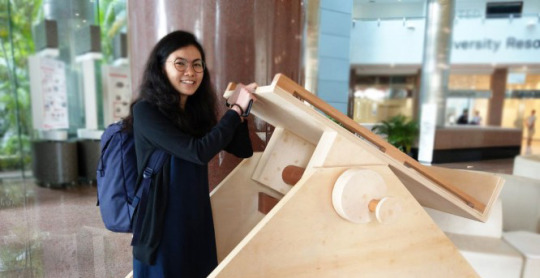
In the era of smart tech and automation, a low-tech idea that seeks to benefit developing countries impressed the judges at the recent 13th Biomedical Engineering Society Student Meeting.
25-year-old SITizen Isabel Ang Shi Qi, a final-year undergraduate with University of Glasgow for the BEng (Hons) in Mechanical Design Engineering programme, clinched the Silver award for the IES Innovation Challenge for the Community, as well as a Merit award for the Undergraduate Podium for her innovative tilt table for cerebral palsy treatments.
As a machine that assists in the blood circulation of cerebral palsy patients and the improvement of their overall bone density, tilt tables are typically expensive due to electrical and motorized elements. Judges were particularly impressed by Isabel’s tilt table design that fully utilises sustainable resources such as wood and bamboo poles, which are generally found in abundance in developing countries that lack access to electricity.

PHOTO: Isabel Ang demonstrating how her tilt table prototype works
A multi-disciplinary collaboration between SIT Engineering and Health and Social Sciences clusters
Through a humanitarian trip to Cambodia, faculty representatives from the Health and Social Sciences and Engineering clusters identified several service opportunities for the university to embark on. One of the initiatives was to offer probable solutions to the challenges faced by a physiotherapy clinic in a remote village.
Due to the lack of funding and access to technological resources, the clinic has not been able to acquire proper therapy devices required for cerebral palsy children to train on, and have been relying on various ingenious alternative ways to assist patients in rehabilitation.
As a result of the close consultation with her Engineering professor, as well as faculty members of the Health and Social Sciences cluster who dispensed valuable expertise on the treatment and care pathways for cerebral palsy patients, Isabel applied her engineering know-how acquired from the course of her studies to the concept and design of the tilt table.
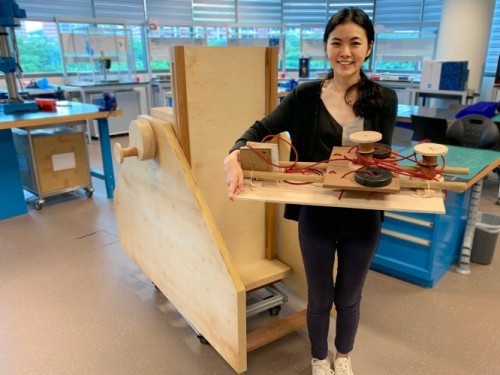
PHOTO: A key feature of Isabel's tilt table includes the pulley system that acts as a counterweight to prevent the machine from toppling over
A purposeful, cost-effective solution for developing countries
Isabel’s innovation is a much needed one given that tilt tables in the markets sold for cerebral palsy treatments are generally expensive due to their high-tech nature. Her tilt table infuses the best of engineering methodologies to ensure that the product does not compromise on the therapy required, despite the absence of motorised framework gadgetry.
Crucial toIsabel’s success were the features that were carefully considered to ensure the ease of use, stability and safety of the device, including:
a rotational crank -in place of a motorised button- that could be easily be operated by physiotherapists;
an additional set of structure that acts as a safety feature to prevent the main frame from overturning when a patient is placed on it; and
a pulley system that acts as a counterweight to prevent the machine from toppling over.

PHOTO: Accepting the award at the Biomedical Engineering Society's 13th Student Meeting
“Through a personal encounter I previously had with a cerebral palsy child, I saw first-hand how patients struggle with everyday motor skills that we tend to take granted for. I can only imagine the challenges that physiotherapists in developing countries face in acquiring the machines needed to help in cerebral palsy treatments. That motivated me to work on this project, and spurred me on to find a potential solution that is accessible to remote villages in developing countries,” shared Isabel.
“We are currently assessing if Isabel’s prototype can be further refined and potentially replicated for implementation in Cambodia,” Associate Professor Alfred Tan, Programme Director of University of Glasgow’s BEng (Hons) Mechanical Design Engineering programme, said.
Our heartiest congratulations to Isabel for her recent award wins! We wish her and our team of faculty the best in pursuing the implementation of this device to the benefit of developing communities.
0 notes
Text
Undergraduate and Postgraduate Programmes
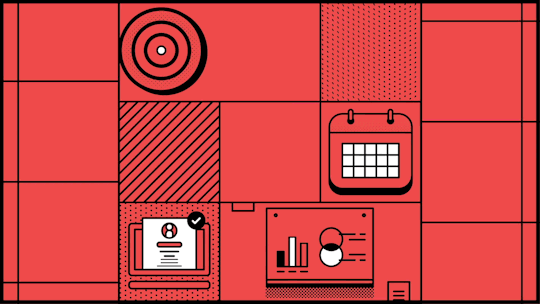
https://www.singaporetech.edu.sg/undergraduate-programmes
0 notes
Text
Driving the future of autonomous mobility
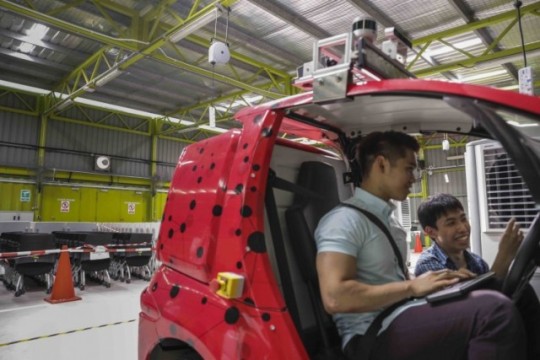
SIT developed its first Electric Autonomous Vehicle as a key learning tool for Telematics undergraduates
True to SIT’s status as Singapore’s university of applied learning, an electric autonomous vehicle (EAV) has been deployed for the primary purpose of bringing the technology up close and personal to students reading the Bachelor of Engineering with Honours in Telematics (Intelligent Transportation Systems Engineering) programme.
Aptly named as The S.E.A.D. Car, which stands for The SIT Electric Autonomous Driving Car, it has started making its rounds on SIT@Dover campus grounds, much to the delight of the SIT community.
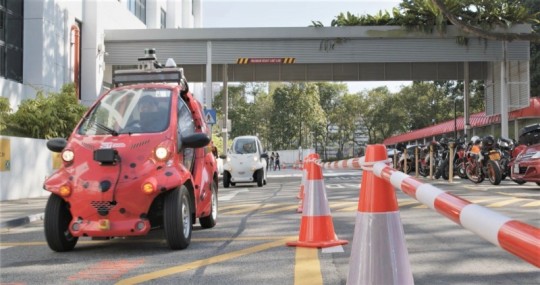
PHOTO: The S.E.A.D. Car is set to be a mainstay at SIT@Dover
Developed in close partnership with SIT industry partner SingPilot, The S.E.A.D. Car consists of input by SITizens through their Integrated Work Study Programme (IWSP) with the company. Year 3 students Boris Khoo and Alvin Lim Jing Yik had the opportunity to contribute to the development of the vehicle by creating a modular design for the EAV’s vehicular controls, including functions such as the acceleration, brakes and gear system, among others.

PHOTO: Students getting up close and personal with the EAV to learn about autonomous technology
The EAV enhances students’ laboratory experience to build capabilities in the autonomous domain. It is also a prime example of how students can ‘get their hands dirty’ with technology that is relevant to modules focused on location sensors, inter-car connectivity and other intelligent automotive systems-related subjects.
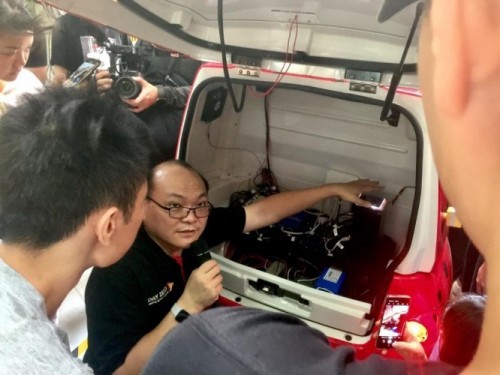
PHOTO: Mr Dan Chia, Senior Lecturer, SIT, taking students through the EAV’s various functions in detail
“The future of mobility rests in the development of smart technology of today. At SIT, we are driven to pave the way forward together with our students, the innovators of tomorrow. The S.E.A.D. Car represents our commitment to exploring the potential in transforming our transport system in smart nation Singapore,” said Associate Professor Zheng Jianxin, Programme Director, BEng (Hons) in Telematics (ITS Engineering).
Acting as a test bed for a complete smart transportation network, the EAV will also complement the installation of Smart Lamp Posts around the campus, driving research on the communication between autonomous vehicles and infrastructure. These lamp posts can be used to direct driverless cars, catch speeding e-scooters and even analyse faces, down to race, gender and age.
Successful runs of the EAV will ascertain deployment of more EAVs in the future SIT@Punggol campus.
0 notes
Text
Championing Applied Learning
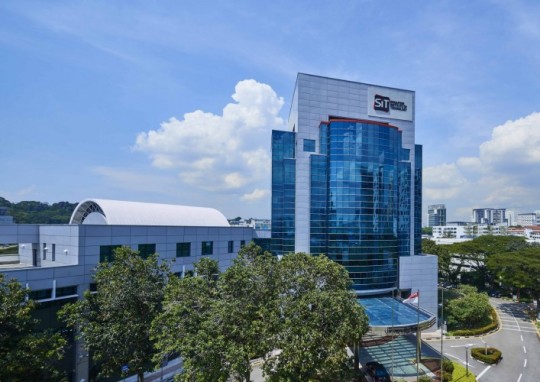
As our economy continues to transform, the role of applied learning in higher education has grown in significance. Since 2014, as Singapore’s university of applied learning, the Singapore Institute of Technology (SIT) has grown from strength to strength in nurturing an industry-ready workforce to drive Singapore’s future growth.

Pioneering applied learning
A pioneer in applied learning, SIT was set up in 2009 to provide an upgrading pathway for deserving polytechnic graduates to obtain industry-relevant degrees. From an inaugural batch of 500 students, SIT has grown to be a full-fledged Autonomous University with 7,000 students, offering 42 degree programmes, including 14 of its own and 15 jointly with renowned overseas universities.
Its growth is backed by a distinctive commitment to engage students in innovative pedagogy by integrating learning, industry and community; and focusing on offering applied degree programmes that cater to diverse student profiles and industry needs.
SIT is unique in its applied learning pedagogy. With more than 90 per cent of its undergraduates from polytechnics, SIT has a student population of handson learners. SIT elevates their learning experience by instilling in them a mindset of learning by doing, rather than learning for doing, to enhance their industry-readiness.
At SIT, applied learning is weaved into every aspect of a student’s learning journey, whether it is in the classroom or the real world and whether it is during learning or assessments. Its unique pedagogy of integrating work and study is built upon a solid foundation of industry collaborations and an expanding line-up of programmes catering to emerging economic sectors.
Unlike other universities, SIT has organised its academic staff according to technical domain clusters instead of faculties. This matrix academic structure has stimulated interdisciplinary collaborations and teaching across related disciplines.
Industry-centric education
SIT carries its applied learning approach fully through its curriculum, to create a seamless work-study and highly industry-focused educational journey for its students. The university boasts close collaboration with various industry partners that opens up to its students abundant opportunities for industry attachments and work-study programmes.
In addition, SIT has also established Industry Advisory Committees (IAC), comprising key industry leaders, to guide the curricula development of its degree programmes. Their feedback allows SIT to continually shape its curricula to ensure its industry relevance.
Industry knowledge is delivered to students every day at SIT, as the majority of its faculty staff are also part-time consultants in their respective industries. Their industry experience and professional networks entrench a long-lasting industry and academia collaborative relationship that translates to an authentic learning environment for students.
SIT takes its industry focus further with its corps of Professional Officers. Drawing on their profound industry experience, these individuals mentor students undertaking industry attachments and projects, guiding and motivating them to maximise every learning opportunity.
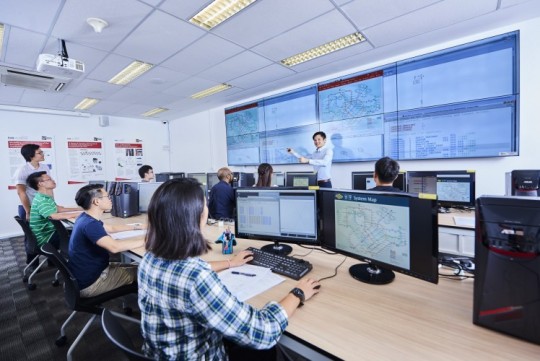
PHOTO: Students are exposed to specialised modules such as railway simulation as part of their learning
Integrated Work Study Programme
Demand for SIT graduates is seen in its overall graduate employment rate that reached 92.3 per cent in 2017. A key driver of this positive outcome is the Integrated Work Study Programme (IWSP), a compulsory component for students in SIT-conferred and joint degree programmes.
In IWSP, students spend eight to 12 months working and studying. The extended period enables students to participate in projects with longer timeframe and make significant contributions to the company.
IWSP gives SIT students a firm head start to the working world, by exposing them to the latest industry developments, business intricacies and work cultures. The work-study continuum also helps undergraduates transit to their future jobs with lesser effort and greater success.
For example, students of the Sustainable Infrastructure Engineering (Land), or SIE (Land), degree programme have gained deep insights into Singapore’s land transport development, through IWSP at organisations such as the Land Transport Authority, SMRT and SBS Transit.
To date, more than 1,300 students from 16 programmes have completed IWSP at more than 500 companies. However, to the industry, IWSP is more than just an attachment programme – it has become a conduit to identify and recruit future talents.
In a preliminary survey of the Class of 2018 conducted by SIT, close to 70 per cent of graduates from SIT-conferred degrees received employment offers from firms where they did their IWSP, and over 90 per cent among those surveyed had secured jobs. In particular, for the SIT Accountancy programme, 92 per cent of the cohort received advance job offers upon completion of their IWSP.
These results attest to the effectiveness of SIT’s approach in enhancing its students’ employability by emphasising on real industry assignments in IWSP.
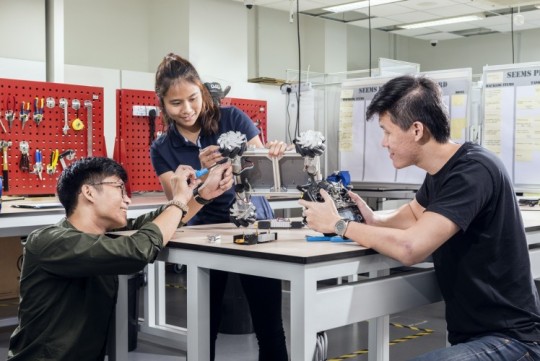
PHOTO: At SIT, students’ learning is reinforced through doing and hands-on practice.
Diverse engineering programmes
SIT offers diverse, multi-disciplinary engineering degree programmes that are closely aligned with Singapore’s key economic growth sectors. These include aerospace, chemical, civil, electrical power, marine, mechanical, land transport, pharmaceutical, systems and software engineering.
Its curriculum trains students to be professionals with a mastery of deep specialist skills in their chosen disciplines. This creates a distinctive edge to the students’ professional competencies, while building a strong pipeline of specialist engineers to solve increasingly complex industry problems.
Thus far, SIT has introduced several first-of-its-kind specialised degree programmes in Singapore. Launched in 2014, the SIE (Land) programme focuses on nurturing talents to meet latest demands in railway engineering and has already graduated its pioneer cohort of BEng and MEng students in October 2018.
SIT also introduced the Telematics (Intelligent Transportation Systems Engineering) programme in 2016, in view of the rising impact of telematics in the automotive, avionics and marine industries. This unique programme gears students towards supporting the growth of transportation super-infrastructure in Singapore.
In 2018, SIT unveiled the Aircraft Systems Engineering programme in collaboration with SIA Engineering Company. Built on an interdisciplinary curriculum that intersects engineering, science and a hands-on approach, the focus of the programme is to produce graduates for the aerospace and MRO industries.
All in all, while still studying at SIT, students would have gained a firm footing in the workplace and more importantly, made a big step towards becoming catalysts of Singapore’s future transformation.
This article was adapted from The Singapore Engineers April 2019 publication with the permission of The Institution of Engineers, Singapore.
0 notes
Text
A lean way to address industry problems
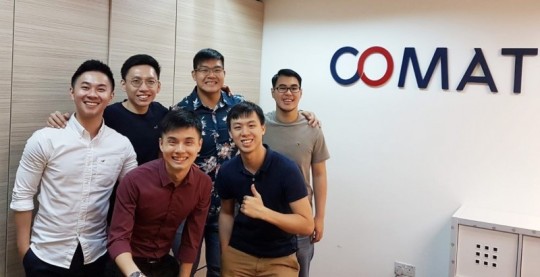
As part of SIT’s applied learning pedagogy, 160 students from SIT’s Sustainable Infrastructure Engineering (SIE) (Land) degree programme have embarked on 30 lean projects with 16 host companies since 2016 to help improve productivity and work processes.
This mutually beneficial endeavor was initiated by SIT faculty, Associate Professor Mustafa Shabbir Kurbanhusen, as part of the ‘Lean and Quick Response Repair’ module in the SIE (Land) programme.
The first six weeks in the learning journey are focused at equipping students with knowledge on the lean principles and tools to eliminate the ‘8 wastes’ commonly found in any process. This is reinforced through activity-based workshops to apply the lean concepts. The remaining six weeks will see the students working on ‘real’ industry problems. Companies are engaged as industry hosts to the students to work on lean-based productivity enhancement problem statements. These companies are from various sectors including government agencies, healthcare, transport, engineering, real estate and food manufacturing.
Students have to regularly visit the companies on-site to obtain crucial information for continual improvement opportunities. This is in tandem with weekly consultation with SIT faculty and professional officers to address industry challenges and come up with implementable solutions. Deliverables include a report, poster and presentation to the industry host detailing the ‘value stream map’ – a visual map showing the current process – as well as the proposed recommendations for follow-up.
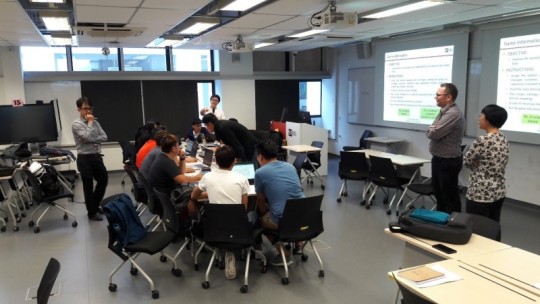
PHOTO: Activity-based workshops to equip students with lean knowledge, coupled with hands-on application.
Improving Processes at Old Age Home
Lee Ah Mooi Old Age Home is one of the pioneer organisations who came on board this initiative. It engaged the help of SIT students to look into improving its processes, including the adult diaper storage and retrieval system, as well as the laundry retrieval, sorting and storage process. The teams from SIT were able to identify the wastes in the processes and recommend feasible solutions, such as implementing gravity flow rack, diaper dispensing bins, and storage boxes with dividers for laundry.
“Throughout the course of the project, we achieved key milestones such as increased efficiency in store and inventory management of essential medical consumables. With the experience gained, we are able to better manage and improve workflows. Furthermore, the sense of satisfaction upon fulfilling the module is tremendous and applicable to future work,” shared Veronica Chng, SIE (Land) student.
“We appreciate the help of SIT students in executing these projects, which may be trivial but beneficial for us. The walkthrough of our processes gave us an opportunity to rethink them and the students’ inputs have helped us in making some minor changes and streamlining our work too. The changes will ultimately benefit our residents greatly,” said Mr Then Kim Yuan from Lee Ah Mooi Old Age Home.
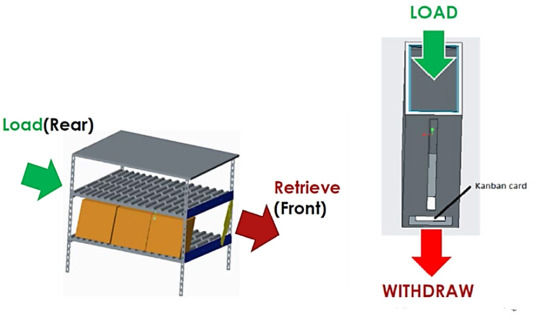
PHOTO: Some recommendations for Lee Ah Mooi Old Age Home included the use of gravity flow rack and diaper dispensing system to improve the work flow.
Enhancing Deployment of Mobile Dental Clinics
Another team of SIT students took on the task to review and streamline the deployment of mobile dental clinics for Unity Denticare. After an extensive analysis of the current work process, the team came up with a standard operating procedure (SOP) document to ensure clients are aware of their respective roles. To ensure a seamless flow of patients, the students also designed banners and signage to encourage walk-ins from the public.
“It is good that the students are encouraged to go to the ground to observe and ask questions. Kudos to the students for being patient and proactive to get to the root of the problem,” remarked Mr Jonathan Tan from Unity Denticare.
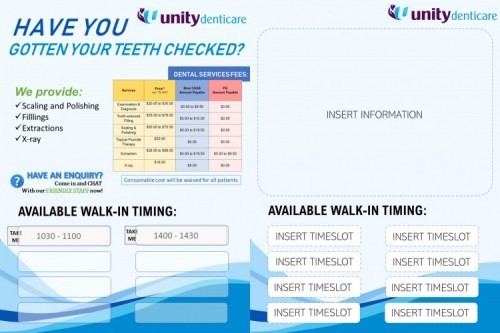
PHOTO: The banner designed by the students to encourage walks-ins from the public.
Improving Customer Engagement
COMAT, a training services centre under ST Electronics, was keen to enhance its customers’ experience. The SIT team focused on tackling issues such as long queues during peak period, manual registration process, and difficulties in finding training rooms. The team came up with a detailed wayfinding guide, including visual map, floor and wall markings to direct customers to the correct training location. In addition, the team also designed a self-directory information display for the TV screens, which had received positive feedback from the users.
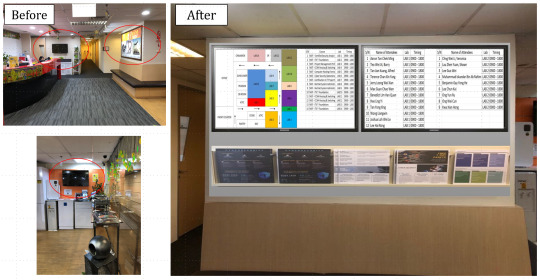
PHOTO: One recommendation from the students was to display clear, colour-coded course information on the TV screens.
“The programme provided us an independent perspective on our current processes. In addition, the students proposed several areas of improvement in which we could look into to improve our customer engagement and experiences,” commented Mr Alton Loo from ST Electronics (e-Services).
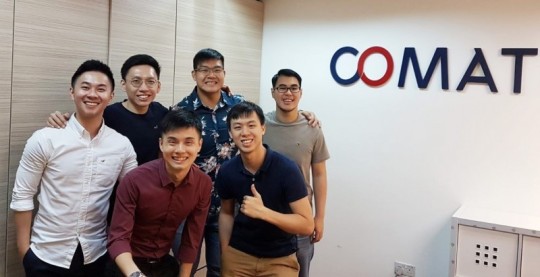
PHOTO: The SIT team with Mr Alton Loo (in red).
For the students, the lean module provides them with industry exposure before they go out for their one-year Integrated Work Study Programme (IWSP). They can then proactively apply the lean knowledge learnt to initiate productivity enhancement projects in their IWSP organisations, reinforcing SIT’s mission to produce industry-ready graduates.
Alfred Tan, SIE (Land) student who completed the project with COMAT, remarked, “Through this project opportunity, our team took back many valuable lessons on how lean can be applied to enhance the service standards of a company. For example, the ‘Gemba Walk’ concept allows us to gain a deeper understanding of the company through interactions with full-time staff.”
Another student, Shaun Lau, commented, “Performing Lean for Unity Denticare has allowed me to work closely with the industry to provide more value for my clients, while benefiting the community. Improvements in turnout rates of dental patients and operational procedures are examples of key milestones achieved. This experience has translated to benefit my IWSP organisation – SYSTRA, through enhancement of various processes such as the creation and implementation of a new quality management system and efficient client facing.”
0 notes
Text
Grooming Industries’ Finest

The mission of Singapore Institute of Technology (SIT) have been clear right from the start: to groom and develop future-ready leaders who are well-trained in industry knowledge and highly demanded by employers. To achieve these, SIT centres its curriculum on technical knowledge and applied learning. Its flagship Integrated Work Study Programme (IWSP) requires all SIT undergraduates to immerse themselves fully in the industry for eight to 12 months to gain a full perspective of their fields of expertise before stepping foot into the corporate world.
Ang Guo Gen and Lim Xing Yi, recent graduates with a Bachelor of Engineering with Honours in Information and Communications Technology, have these to say of their education at SIT, and the secured future they are about to embark on.

PHOTO: Ang Guo Gen, Systems Engineer, Cyber Security Agency Singapore. Bachelor of Engineering with Honours in Information and Communications Technology (Information Security).
I chose SIT for the Integrated Work Study Programme.
“As an information security consultant at Wizlynx Group during my IWSP, I was tasked with performing various assessments and solving industry problems for customers worldwide. These included mobile and web application penetration testings, network vulnerability assessment, and data security configuration review.
I worked with colleagues from Mexico, China, and Switzerland as Wizlynx Group is an international company with offices all around the globe. I was also given the opportunity to take part in an industry-level Capture-The-Flag competition with my IWSP supervisor where I learned different strategies in attacking, defending, and solving tasks.
The greatest takeaway from my IWSP would be the skills, professional work ethics, and network connections gained during the period. It equipped me with the understanding of how the industry worked and how I could contribute to it, based on the theoretical and practical skillsets I learned at SIT.”

PHOTO: Ixia Cyber Combat 2017 – Champion (1st from left)
SIT transitioned me into a highlyspecialised professional with deep technical expertise.
“Throughout the pursuit of my degree, I have participated in many competitions to hone my information security technical skills and knowledge. It allowed me to further improve my learning by performing research and conducting studies to master the unsolved challenges after the competitions.
I am now working as a systems engineer performing pentesting and security assessments at the Cyber Security Agency of Singapore, the national agency overseeing cybersecurity strategy and operation, education, outreach and ecosystem development, which is part of the Prime Minister’s Office and managed by the Ministry of Communications and Information. As SIT’s education is practice oriented and industry-focused, I believe I am well-equipped to excel in my role and contribute back to society, which was the reason I got into the information and communications technology industry in the first place.

PHOTO: Lim Xing Yi, Digital Business Technologist, StarHub Ltd. Bachelor of Engineering with Honours in Information and Communications Technology (Software Engineering)
One of the unique features of my degree programmes is that the capstone project is set by the company during the IWSP. I find this approach meaningful and valuable.
“I did not implement a project simply for grading purposes, but served it as a real-world project for LDR Pte Ltd, where I was attached to for my IWSP. As a mobile app developer, I applied the knowledge I had gained at SIT, such as conducting usability test for user experience, and secure coding methodology by performing source code analysis. Besides that, I had picked up new programming languages, such as Swift 3, and extended my knowledge in one of the NoSQL databases, such as MongoDB.
The IWSP is a good platform for undergraduates to further explore their own interests and assess their capabilities, in terms of the type of industry and job scope that suits them before stepping out into the workforce.”
SIT’s applied learning pedagogy defintely trains and prepares graduates like me to be industry-ready. I am honoured to have won the Singapore Valley Award 2018 and earned a three-month internship with internet company 2345.com in China.
“I gained first-hand insight into the huge mobile app market in China and how the cashless society operates. As an assistant web software engineer, I have learned from my manager at 2345.com on how to be flexible and adaptable to changes to support increasing demand during peak periods.
Although I had prior working experience, SIT’s holistic curriculum allowed me to learn various software engineering practices that I was not previously exposed to in my previous employment. For example, we not only covered platforms that can be programmed, but also areas such as user experience, software performance, security, and project management which are essential to building quality software. The applied knowledge and invaluable soft skills that I learned at SIT have undoubtedly enriched my experience and deepened my technical skillsets, as I begin my career at StarHub.”

PHOTO: Internship at 2345.com in China
This article was adapted from the BrightMinds 2018: Polytechnic and University Edition with the permission of CareerBuilder Singapore.
0 notes